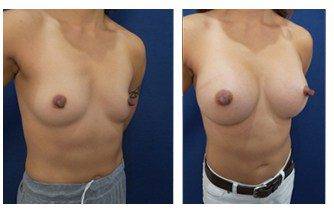


This 42-year-old female demonstrates a post-bilateral breast augmentation with 339 cc silicone implants.
Breast augmentation, meaning the enlargement of breast mound size, has evolved throughout the last two decades. Breast augmentation meaning has been traditionally limited to using a round spherical-shaped foreign element used to enlarge the breasts. Types of breast implants include saline implants and silicone implants, both of which possess a solid silicone shell. Saline implants are filled with a salt solution, whereas silicone implants are filled with a semi-liquid silicone gel.
The silicone implant sphere is created using a solid silicone shell filled with silicone gel. Whether the silicone molecules are solid or in a semi-liquid gel form is based on the degree of cross-linking between the silicone molecules. Increasing the cross-linking of the silicone molecules will transform a gel into a solid silicone form.
Regardless, breast augmentation meaning has evolved regarding the types of silicone breast implants available throughout the last two decades. Breast implant evolution involves the a)type of implant shell, b) implant shape characteristics, and c) varying silicone gel cross-linking of the implant. Historically, breast augmentation surgery patients were provided options of a smooth versus textured implant shell surface. The smooth shell surface provided the advantage of sliding in the implant pocket under the chest muscle. The ability to slide in the implant pocket allowed breast implants to be easily repositioned by a breast surgeon in the office if they became inadvertently malpositioned. The textured breast implant shell was introduced to reduce the risk of capsular contracture.
However, this implant was recently discontinued due to the rare risk identified of inducing developing breast cell lymphoma. Various implant shapes, such as the teardrop shape, have also been developed to contrast the more popular round shape. The disadvantage of teardrop or shaped implants is that they can make the breast look deformed if it rotates in an unfavorable position. Finally, varying silicone gel cross-linking has altered the breast implant’s consistency. The less cross-linked and, thus, more liquid implants will naturally feel softer but be prone to wrinkling. Wrinkling of the implant can result in contour irregularity of the breast mound, coined rippling. The more cross-linked gel implants, termed cohesive implants, may feel firmer but are less prone to rippling.
In addition, breast augmentation meaning has evolved concerning where the silicone implant is positioned, i.e., either above or below the muscle. Today most women with breast implants choose to have their implants under the muscle since this positioning of the implant has proven less prone to capsular contracture. On rare occasions, extreme sports participating women with breast implants may elect to have them positioned under their breast tissue to avoid altering their pectoral muscle.
Even the breast augmentation implant insertion approach has evolved over the last four decades. Traditionally, breast implant insertion was limited to the use of the inframammary crease, which is the crease that lies in the natural junction between the breast and the tummy. However, this single approach has been expanded to include the infra-areolar (underneath the areola), axillary (in the armpit), and even transumbilical (through the belly button). Each of these approaches has advantages and disadvantages. The inframammary crease approach remains the most reliable and reproducible approach to breast augmentation. It provides several advantages, including minimizing trauma to the breast glands and subsequent breast pain. Breast implant surgery using the inframammary crease also prevents unsightly scar tissues if you are prone to scarring as the incision is located in the shadow of the lower breast pole. Finally, the inframammary crease approach allows the surgeon to optimize implant position symmetry.
Finally, over the last decade, breast augmentation meaning has evolved to include fat transfer. Fat transfer is performed by harvesting, processing, and transferring your fat from areas of undesirable fullness over the body back to the breast. Breast augmentation, meaning fat transfer to enlarge the breast mound, has been proposed to eliminate the need for breast implant medical devices. Fat grafting indications have grown to include cosmetic and reconstructive surgery cases. Fat transfer breast augmentation has also become an alternative breast enlargement in patients suffering from breast implant illness syndrome.
Unfortunately, to date, fat transfer has been limited by several factors. First, most patients desiring breast augmentation do not have enough fat to harvest for adequate volume enhancement of the breast mounds. Moreover, attempts at fat transfer have demonstrated a limit of fat transfer to the breasts in the range of 150 to 200 cc’s the transfer. Interestingly, increasing transfer volumes to the breast greater than these volumes has resulted in less volume gain for patients. In general, this transfer volume is way less than the volume desired by most patients in the range of 300 to 600cc. With this limitation, realistic breast fat transfer protocols would necessitate a minimum of two to three separate surgeries making this alternative to breast augmentation meaning not reasonable.
Today, breast augmentation meaning the increase in breast volume, is limited to breast mound enlargement using a foreign breast implant made of silicone.
Standard of Breast Augmentation Meaning
The standard of care for breast augmentation also dictates the use of smooth-shell breast implants in contrast to the textured shell associated with a rare form of lymphoma.
In addition, the inframammary crease approach and subpectoral pocket implant positioning are the routines. The inframammary crease approach has demonstrated the most consistent results nationally across all breast surgeons providing optimal results and minimized side effects.
Furthermore, the subpectoral pocket implant placement has been shown to minimize the risk of scar thickening around the implant, leading to breast deformity.

